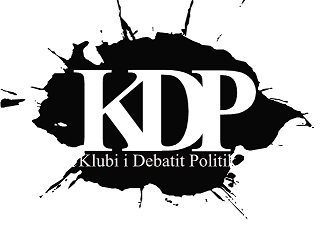However, the declaration of independence over an ethnic Albanian geography, and its recognition over a certain administrative territory in London makes it difficult to define November 28 as a holiday outside Albania. When we talk about the flag, it is often defined as that of all Albanians, and not only that of Albania. Therefore, it is called an ethnic flag, not a national one. In that case, the next logical question is why Albania does not put any distinguishing mark on its national flag?
Author: Xhelal Neziri
The same flag was displayed on the 2nd floor of the Parliament of Albania, on large LED screens, at the 28th solemn meeting of the November Festival: the double-headed eagle with a red background. This is the state flag of Albania, but also the ethnic flag of all Albanians wherever they live.. Such an iconography would not be a problem if the members of the Government and Parliament of Kosovo were not in the Parliament hall. “The flag of Kosovo should have been shown on one screen”, some intellectuals from Kosovo reacted on social networks, who did not like this show. In the public of Kosovo, it was perhaps expected that there would be a protocol, which would avoid the dominance of one state over another. But the display of the red and black flag on both screens seemed to symbolize the opposite. And this was not what hindered so many Albanian ministers and deputies.
This reaction actually shows the dilemma that runs through the Albanians as an ethnic group living in six Balkan states, and that the Asses manage to distinguish between ethnic and national symbols. If the flag is national, that is, only of the Albanian state as a political and administrative entity, or if it is also a symbol of the Albanians as an ethnic group/people – as a cultural entity.
November 28 is the day when Albania gained independence in 1912 and decided that the red flag with the black double-headed eagle will be the symbol that will mark the Albanian state and citizenship. In that November 110 years ago, this state meant all the regions where ethnic Albanians live, or where they are the majority. Two months earlier, that is, in September 1912, the Peace Conference had begun work in London. The main sessions started with work in December, that is, a few days after the declaration of independence of Albania. The great powers of that time, such as Great Britain, France, Germany, Austria-Hungary, Russia and Italy, had gathered in London to define the borders and divide the lands of the Balkans. The Ottoman Empire had already withdrawn and signed the peace agreement. After several months of discussions, in July 1913, the representatives of the great powers decided to recognize the new Albanian state, announced eight months earlier, but with only 60 percent of its territories. The vilayet of Kosovo was given to Serbia, while Chameria was assigned to be part of Greece.
The dilemmas, misunderstandings and misinterpretations of the flag as a national symbol or as an ethnic symbol originate from this historical node. This flag was decided to be a symbol of the new Albanian nation, which was created on a compact territory where the majority were people united by language, territory, history and Scanderbeg, as a historical figure. This nation was a state or constitutional construct on an ethnic group or people, as a product of culture.
Benedict Anderson says that the nation is a socially constructed community, imagined by people to perceive themselves as part of this group (state). Nations began to emerge after the French Revolution of 1879, when ownership of the state from church and kingdom passed to all citizens. Until then, the religious ideology had kept the entire society unique with numerous differences, while the royal family had imposed itself as the undisputed authority in the direction of the monarchy. With the creation of modern states, the church lost its role in the public sphere, while the kingdom was stripped of its power. With this, the unity of societies with class, geographic, ethnic or racial differences, which were united by the same church they attended and the kingdom from which they were governed, was endangered. To replace the religious ideology or monarchy held by different people, the nation is promoted as a family consisting of all those who have the citizenship of the same state.
Here again appears the dilemma of what is the Albanian nation and what is the Albanian ethnicity (people)? Is the red and black flag a national symbol, only of the state of Albania, or ethnic – of all Albanians? When VV- Vetëvendosje was in opposition, it did not accept the national symbols of Kosovo – the flag, the anthem and the coat of arms. Foreign diplomats who met the leader of VV- Vetëvendosje, Albin Kurti, in his office at that time refused to be photographed inside the party offices because there were no symbols of Kosovo, but of “another state”. The same situation was in North Macedonia in 2005, when the Law on the use of flags had to be approved. The internationals could not understand the Albanian politicians why they insist to make the flag of the “neighboring state” (Albania) official in their state (North Macedonia). They persistently demanded that it have distinctive signs in order to make it known that it is an ethnic flag of the Albanians of the RMV, and not the state flag of Albania. The same as, for example, the Turkish Cypriots who have a different flag from that of Turkey, even though they are an ethnic group with the same cultural attributes.
The best comparison that can be made to the Albanian ethnicity is with the German one. Apart from the state of Germany, ethnic Germans are the majority in Austria and make up almost half of Switzerland. So it is an ethnicity that spans three political nations: German, Austrian and Swiss. They continue to use one language – German, as the main pillar of their ethnic identity, which is official in all three countries, but they have an ethnic flag like the Albanians. Otto von Bismarck in the nineteenth century united the provinces of Prussia into a state called Germany, of which he was its first chancellor. At the last moment Austria rejected this union as, unlike mono-ethnic Germany, it was a multi-ethnic empire. The Germans of Switzerland did the same with the reasoning that “better factors in the small Hellenic federation, than peripheral and unimportant in the great Germany”.
However, the definition that Albania and Kosovo are “one nation with two states” prevails among the majority of Albanian politicians in the region. However, this does not mean the outdated ideas of big states, which were buried with the European Union (EU) project. However, the declaration of independence over an ethnic Albanian geography, and its recognition over a certain administrative territory in London makes it difficult to define November 28 as a holiday outside Albania. When we talk about the flag, it is often defined as that of all Albanians, and not only that of Albania. Therefore, it is called an ethnic flag, not a national one. In that case, the next logical question is why Albania does not put any distinguishing mark on its national flag?

